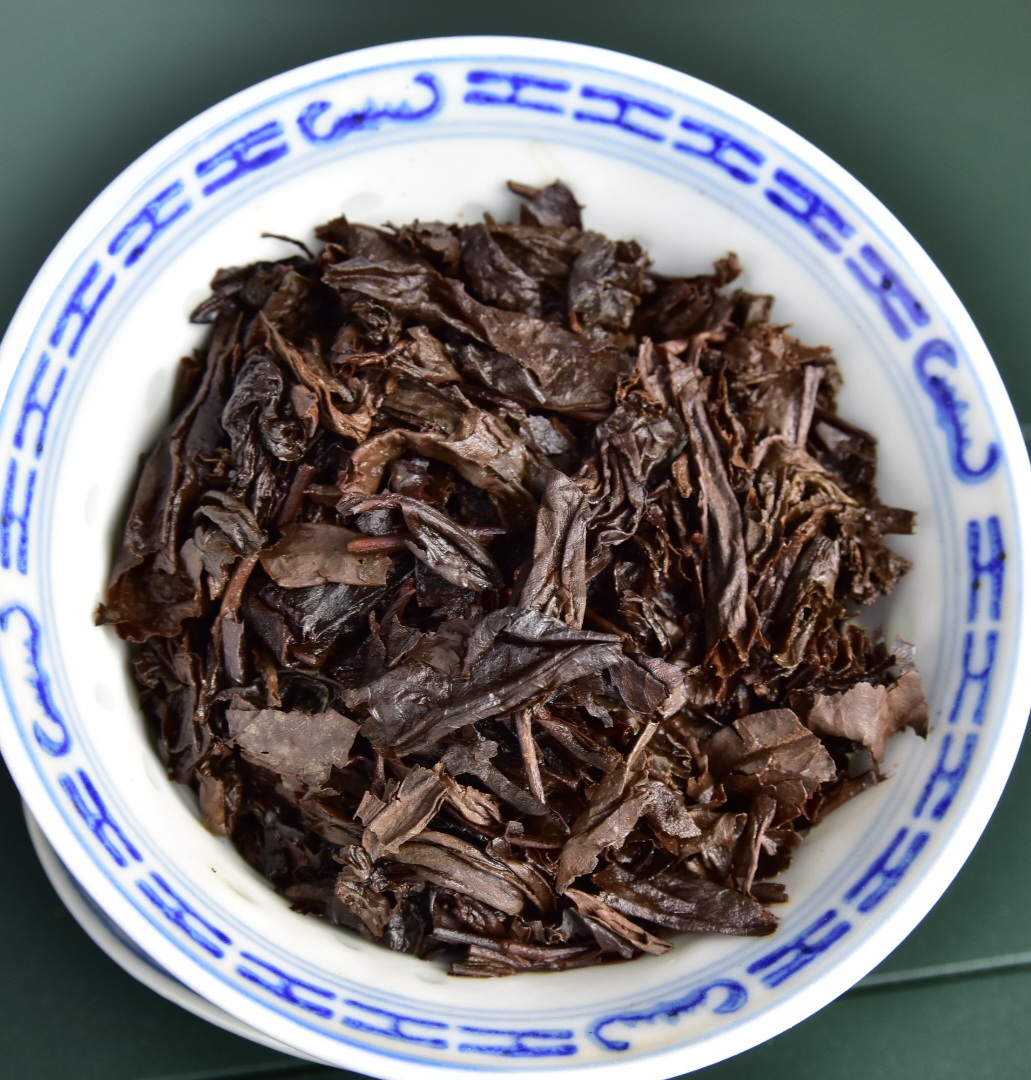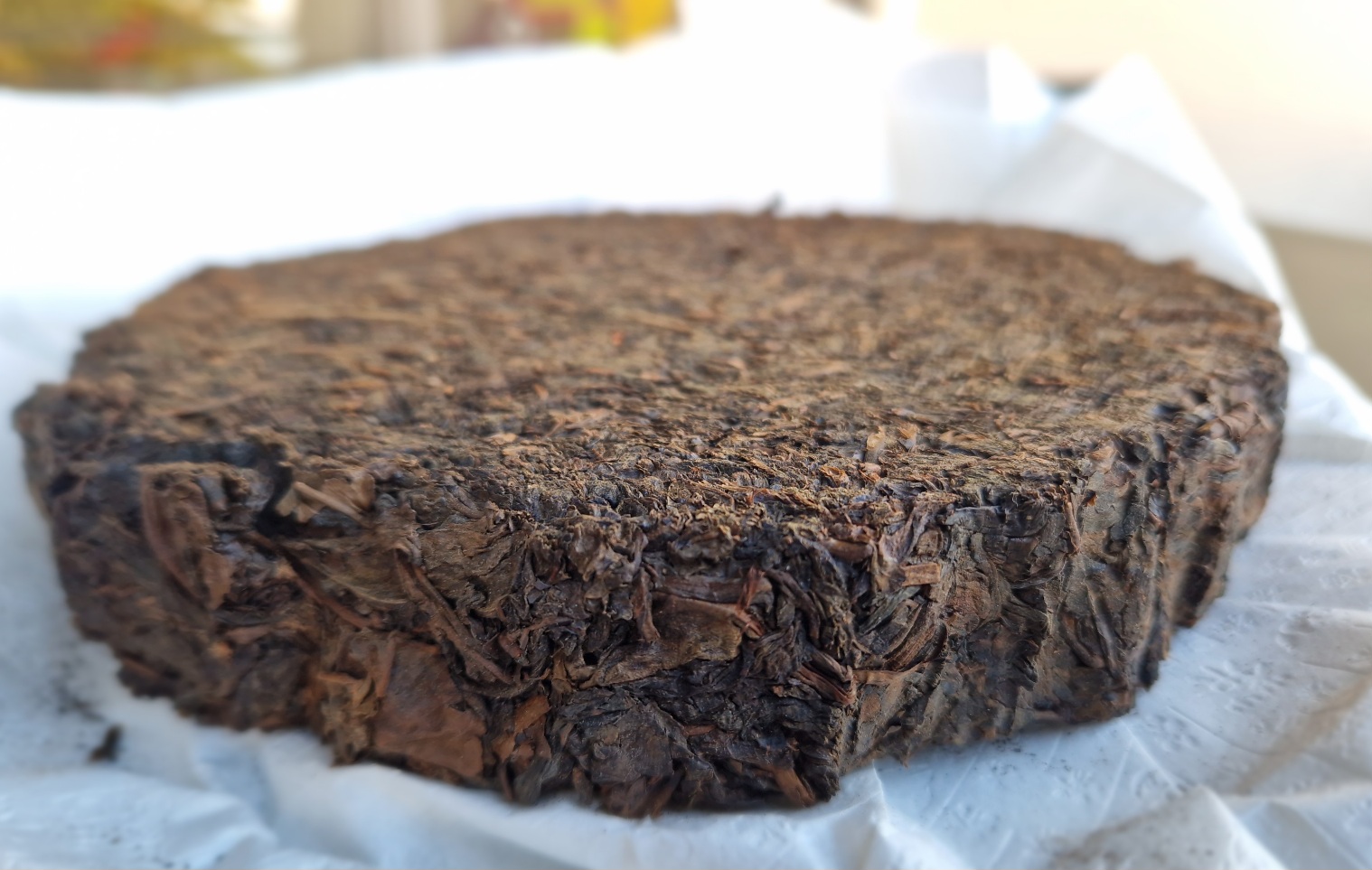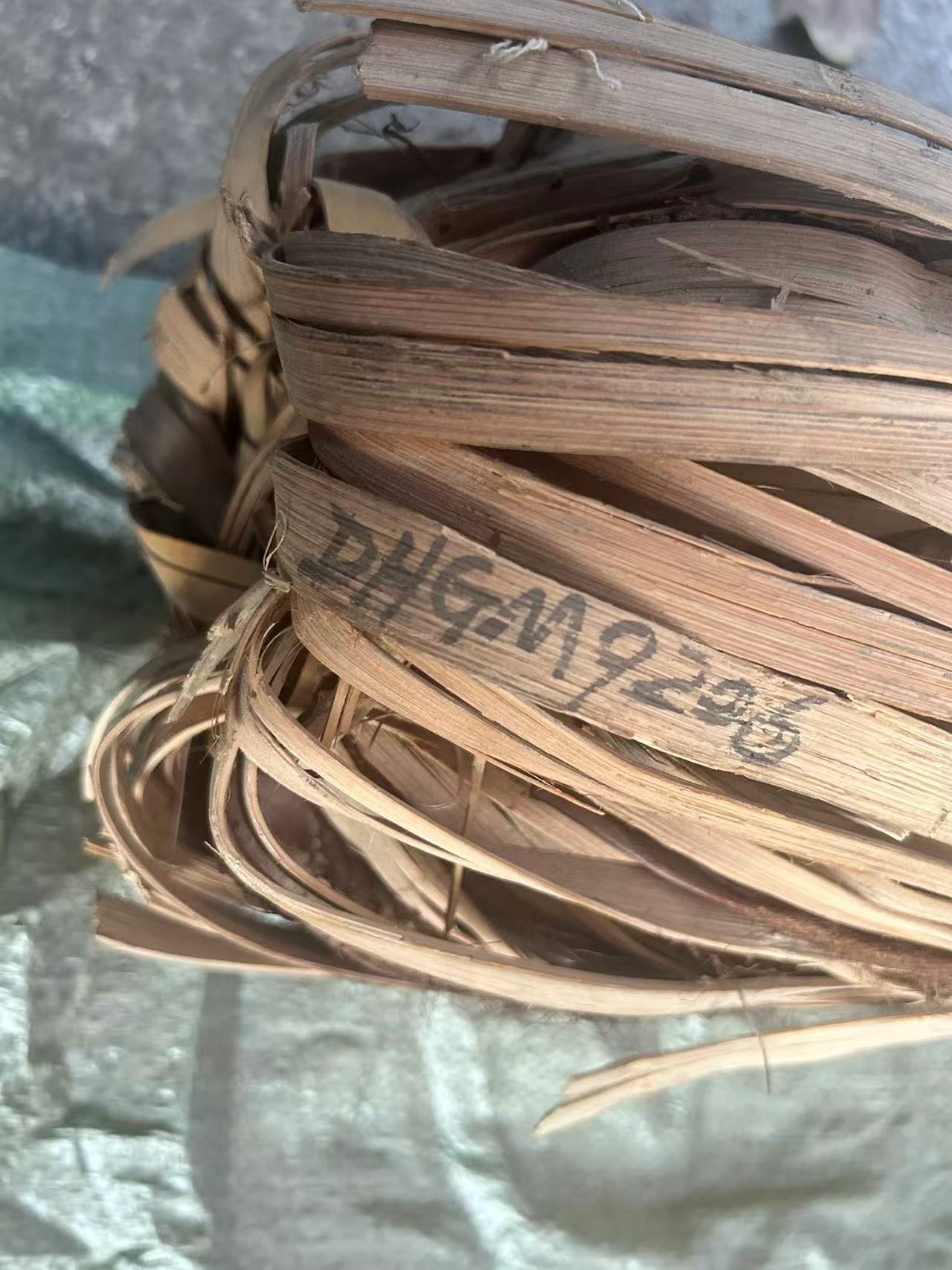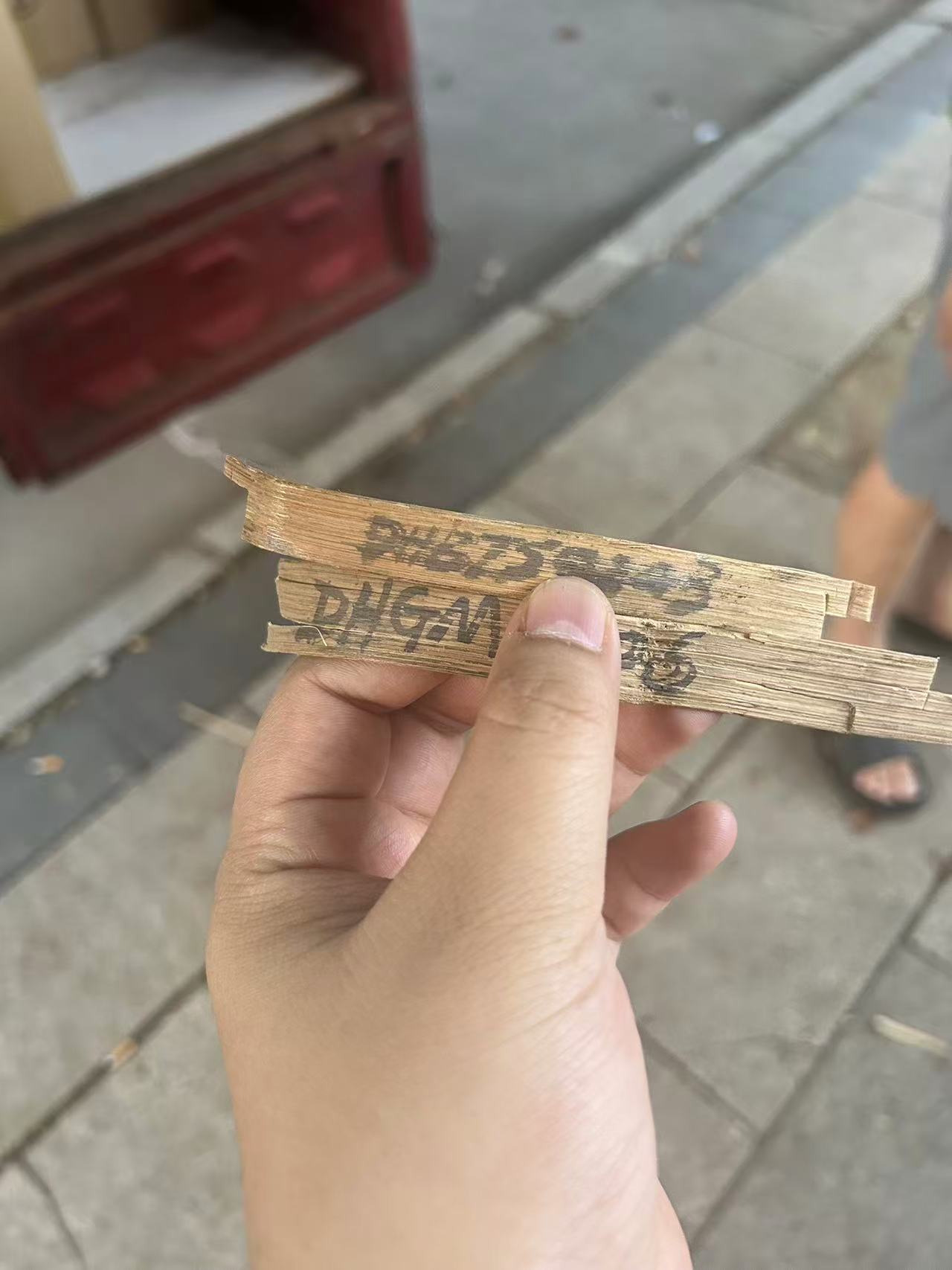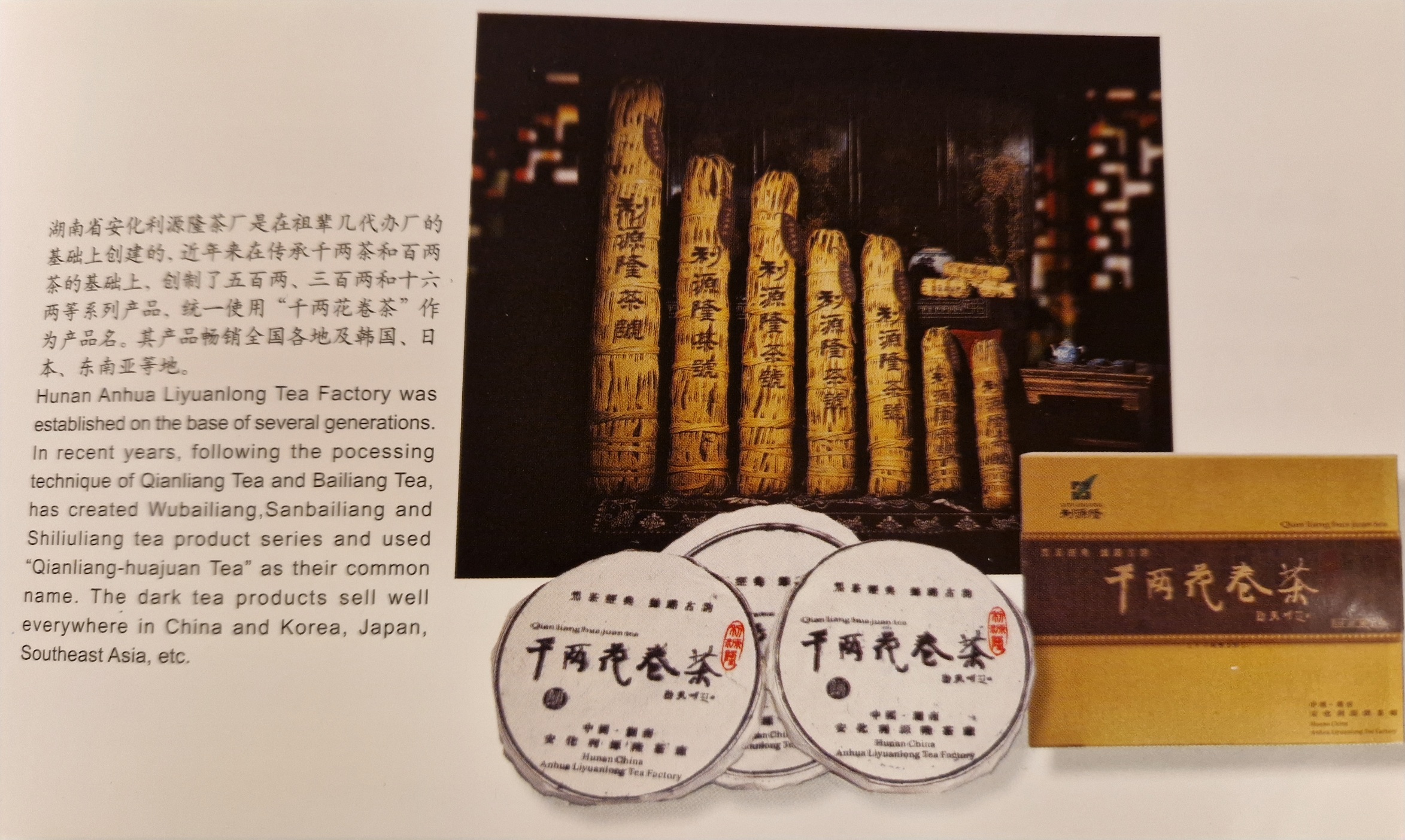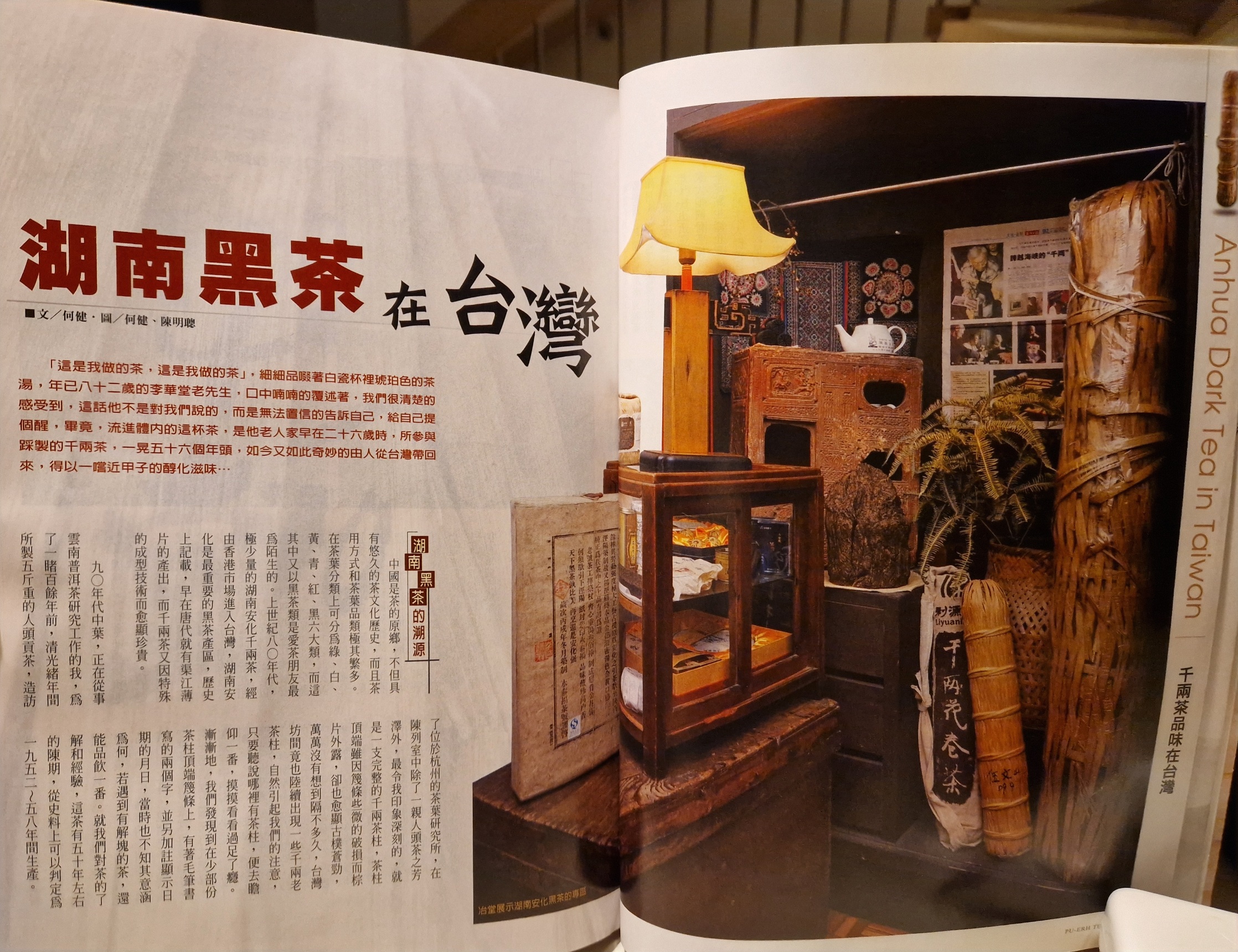- Production year: 2007
- Storage: Hunan
- Month cut: September 2025
- Log weight: 20 kg
- Slice weight: ~500g / slice (+/- 10%)
- Price: USD 90 / slice
- Availability: In stock
Liyuanlong (利源隆) is one of the better known “legacy brands” in Anhua Heicha, in the same category as Yongtaifu and Liu Xiangrui (Daoran). The company is not named after a person but is rather meant to convey the vision of its founder, Wu Jianli: 利 as transmitting the health benefits, 源 the historical heritage and 隆 the future development of Anhua Heicha.
Wu Jianli is quite the figure in Anhua Heicha. He was born in 1958 (the year production of Qianliangcha ceased, replaced by the machine pressed Huazhuan) and grew up in Dongshi, Anhua, in a family involved in different tea business roles. After finishing his military service Wu was assigned to work in a state owned factory you might have heard of – Baishaxi – where, in 1983, he participated in the first production of Qianliangcha since 1958. Later, in 1997 (as factory director at Baishaxi), he oversaw the restoration project that led to the lasting resumption of QLC production (as opposed to the one-off production in 1983). Four years later he resigned from Baishaxi to form Liyuanlong.
For those of you who’ve seen the short CCTV documentary about Taiwanese tea scholar Zeng Zhixian’s (the author of what might be the most famous book about Anhua Heicha (though it covers all kinds of compressed teas) “方圆之缘—深探紧压茶世界”) attempt to get to the bottom of which factory produced a specific QLC log from the 50s with the characters “华堂” written on it, Wu Jianli is the guy accompanying him (from 4.53 in the video).
I’ll stop here. Do watch that documentary though, it’s a pretty cool story.
… so, about the tea.
This is a 2007 “500 liang” huajuan (Liyuanlong has probably made the widest variety of huajuan sizes of any brand). It was made with Gaomaerxi materials.
Note:
The two “codes” seen in one of the images below start with the letters “DHBT” and “DHGM”.
- DH = 丁亥年 (Here referring to 2007,the production year)
- B = 焙火 (As in roasted/baked)
- T = 天字卷 (Tianjian roll, as opposed to the standard, coarser grade 地字卷)
- GM = 高马 (As in Gaoma, Gaomaerxi, the area)
So “DHBT” refers to production year + processing peculiarities (stronger roast and tianjian material - note that “tianjian” has typically been used more liberally when describing leaf grade in huajuan productions; it’s a grade mix but leaning on the finer side of the spectrum); “DHGM” to production year + area,
Note: This tea may contain golden flowers (Jinhua/金花), a perfectly natural occurrence in certain heicha teas. Their development depends on factors like microbial activity, storage conditions, and time. However, individuals with Celiac Disease or severe gluten allergies should exercise caution, as we cannot guarantee that no wheat-based materials were involved at any stage of production.
